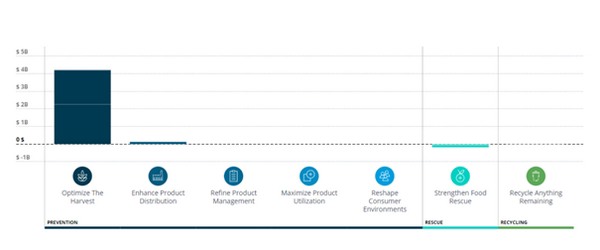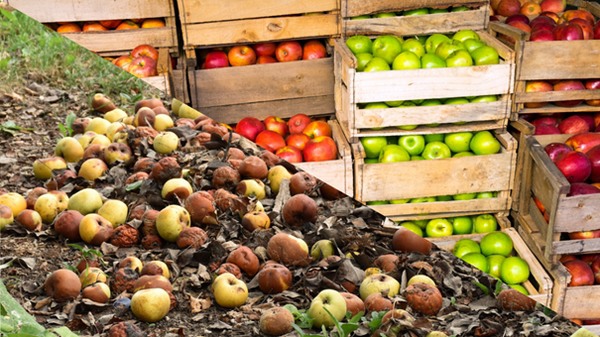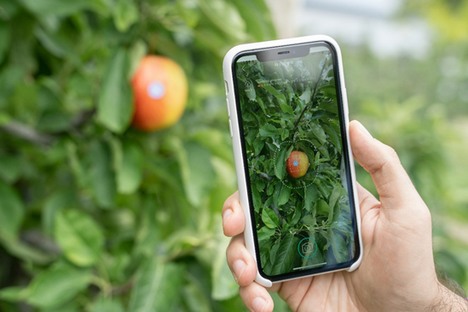Globally, an astounding 1.3 billion tons of food are either thrown away or lost along the value chain, which is approximately a third of the entire food production. What most people are not aware of, is that the majority of food waste accumulates in the very beginning of the value chain. A lot of the produce, especially fruit, is thrown away because of cosmetic blemishes, unusual color, shape or size, as well as surplus. In order to prevent these issues, fruit farmers need real time data about fruit size and fruit count. This information helps farmers take steps needed to get the optimal fruit quality.

Fig.1 showing the annual financial potential for solutions that reduce food loss in the (Source: refed.com)
Food waste is a problem of the whole value chain
Governments and decision-makers worldwide have set objectives to make the fight against food waste more feasible. In general, the UN Food and Agriculture Organization (FAO) differentiates between food loss that happens between harvest and grocery stores, and food that gets lost during sales or is not consumed by the end-consumer. The UN as well as the EU and the US have the objective of reducing both categories of food waste drastically.
And fortunately, there is hope. Passionate startups such as Pixofarm, Too Good to Go and 3PLW are prime examples of how digital tools and innovative ideas can be utilized in the reduction of food waste. Their ideas range from saving fresh food from being thrown away, to optimizing and monitoring the harvest, to converting food waste into feedstock for biodegradable plastics.
Food waste is aggravated by the strict requirements and policies in agriculture
The agricultural sector is known for having rather high standards and requirements for food that is being sold to end consumers. This creates great challenges for fruit farmers, as they are forced to sort out imperfect harvests. Looking at the apple industry specifically, fruits that are either too large or too small, do not have the anticipated perfect form or color, or have any other type of imperfection have to be thrown away. Not to mention damaged apples or entire harvests that are completely rotten on the trees. Some farmers even have to get rid of their apple harvest due to dumping prices. All of the above contribute to food waste significantly, and makes discarded fruit in agriculture one of the areas with the biggest potential for improvement.

Actually, the EU is looking for solutions and measures in order to facilitate the “farm-to-fork” approach. The main focus is to drive the European food industry forward when it comes to the topics of sustainability and circular economy.
AI-based solution helps apple farmers reduce fruit waste
There are multiple actions farmers can take in order to optimize fruit quality, however, they often lack the right information and data that is needed to count the fruits, thin out the trees, predict the fruit size and so on. This data is vital for both offering the best quality possible as well as knowing when to deliver to grocery stores.
The Austrian startup Pixofarm offers a solution for keeping track of this data with just a smartphone. Utilizing artificial intelligence, the Pixofarm app allows apple growers to take pictures of their apple trees and fruits and counts the apples in the farmer’s orchard. The algorithm then forecasts the final number of fruits at the end of the season. The app also offers the function to monitor the size of the apples, which helps forecasting the ideal time to harvest the fruits. The predictive algorithm estimates yield and size class distribution, which greatly facilitates the process of selling to grocery stores.

“It is unarguable that the world is facing a huge food waste problem right now. We cannot continue doing things the way we have been doing them. Change has to happen now. We at Pixofarm focus on getting down to the root of the problem, hence saving food by optimizing the fruit harvest. This way, less fruit has to be discarded. Virtually, we are avoiding food waste before it even arises,” says Farid Edrisian, the CEO of Pixofarm.
For more information:
Rebecca Baranow
Pixofarm GmbH
Tel: +43 660 314 26 30
Email: [email protected]
www.pixofarm.com
